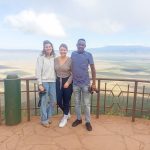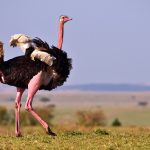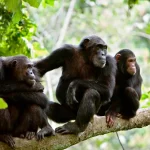
- Tanzania Photographic Safaris: A Guide to Capturing the Best Wildlife Moments
-
Written by : Tarimo Expeditions
Tanzania is known for its abundance of wildlife, and a photographic safari is a great way to capture the beauty and diversity of the animals in their natural habitat. In this article, we will guide you through everything you need to know about Tanzania’s photographic safaris, from the best times to visit, the equipment you need, the types of safaris available, and the top wildlife photography tips.
Tanzania is home to some of the most incredible wildlife in the world, including lions, elephants, giraffes, zebras, and more. A photographic safari in Tanzania offers photographers the chance to capture stunning images of these animals in their natural habitat. In this article, we will guide you through everything you need to know to plan the perfect photographic safari in Tanzania.
Best time to visit Tanzania for a photographic safari
The best time to visit Tanzania for a photographic safari is during the dry season, which runs from June to October. During this time, the animals congregate around water sources, making them easier to spot and photograph. Additionally, the dry season offers the best lighting conditions for photography, with clear blue skies and plenty of sunshine.
Choosing the right safari company
Choosing the right safari company is crucial to having a successful photographic safari in Tanzania. Look for a company that specializes in photographic safaris, as they will be able to provide you with the expertise and supports you need to capture the best wildlife moments. Additionally, make sure the company has experienced guides who know the best areas to find the animals you want to photograph.
Types of photographic safaris in Tanzania
There are several types of photographic safaris available in Tanzania, including private, group, and specialist safaris. Private safaris offer the most flexibility and allow you to tailor your itinerary to your specific interests. Group safaris are more budget-friendly and offer the opportunity to meet and photograph with other photographers. Specialist safaris focus on specific types of wildlife or photography techniques, such as bird photography or night photography.
Equipment needed for a photographic safari
When it comes to equipment for a photographic safari, there are a few essentials you’ll need. These include a high-quality camera with interchangeable lenses, a tripod, a telephoto lens, and plenty of memory cards and batteries. Additionally, consider bringing a polarizing filter to reduce glare and enhance colors, and a beanbag or stabilizer to keep your camera steady in the vehicle.
Wildlife photography tips
Capturing the perfect wildlife shot requires a combination of skill, patience, and a bit of luck. Here are some top tips to help you get the best shots during your photographic safari in Tanzania:
Choosing the right camera settings
- Use a fast shutter speed to freeze the action and avoid blur.
- Use a wide aperture to create a shallow depth of field and blur the background.
- Increase your ISO in low light conditions to avoid underexposure.
Composition and framing
- Use the rule of thirds to create a balanced composition.
- Look for interesting angles and perspectives to add depth to your images.
- Use leading lines to draw the viewer’s eye into the image.
Understanding animal behavior
- Observe the animals and anticipate their movements.
- Look for behavioral cues, such as raised ears or a twitching tail, to capture more dynamic shots.
Shooting in different lighting conditions
- Use the golden hours of sunrise and sunset for warm, soft lighting.
- Experiment with backlighting to create dramatic silhouettes.
- Use fill flash to balance exposure in harsh lighting conditions.
Safety tips for a photographic safari
While a photographic safari in Tanzania is an exciting adventure, it’s important to prioritize safety. Here are some tips to keep in mind:
- Always follow the guide’s instructions and stay in the vehicle unless advised otherwise.
- Respect the animals’ personal space and avoid making sudden movements or loud noises.
- Bring appropriate clothing and sun protection, as well as an insect repellent and a first aid kit.
A photographic safari in Tanzania is an unforgettable experience that offers the opportunity to capture stunning images of some of the world’s most incredible wildlife. By following the tips and advice in this article, you can plan the perfect safari and come away with photos that will last a lifetime.
FAQs
- Is Tanzania a safe place to visit for a photographic safari?
- Tanzania is generally a safe place to visit, but it’s important to follow safety precautions and travel with a reputable safari company.
- What type of camera is best for a photographic safari in Tanzania?
- A high-quality DSLR camera with interchangeable lenses is best for a photographic safari in Tanzania.
- What is the cost of a photographic safari in Tanzania?
- The cost of a photographic safari in Tanzania varies depending on the type of safari, length of stay, and level of accommodation.
- How close can you get to the animals during a photographic safari in Tanzania?
- You should always respect the animals’ personal space and follow the guide’s instructions for safety. It’s important to keep a safe distance to avoid disturbing the animals or putting yourself in danger.
- What should I do if I encounter a dangerous animal during a photographic safari in Tanzania?
- It’s important to follow the guide’s instructions and stay in the vehicle unless advised otherwise. If you encounter a dangerous animal, stay calm and quiet, and do not make sudden movements or noises.
Best of Our Tanzania Safaris
From the Wildebeest Migration to the Big 5 and Tropical White Sand Beaches
Explore the best of Tanzania with our curated collection of safaris packages. Experience breathtaking wildlife, stunning landscapes and cultural richness, there’s something for everyone.



